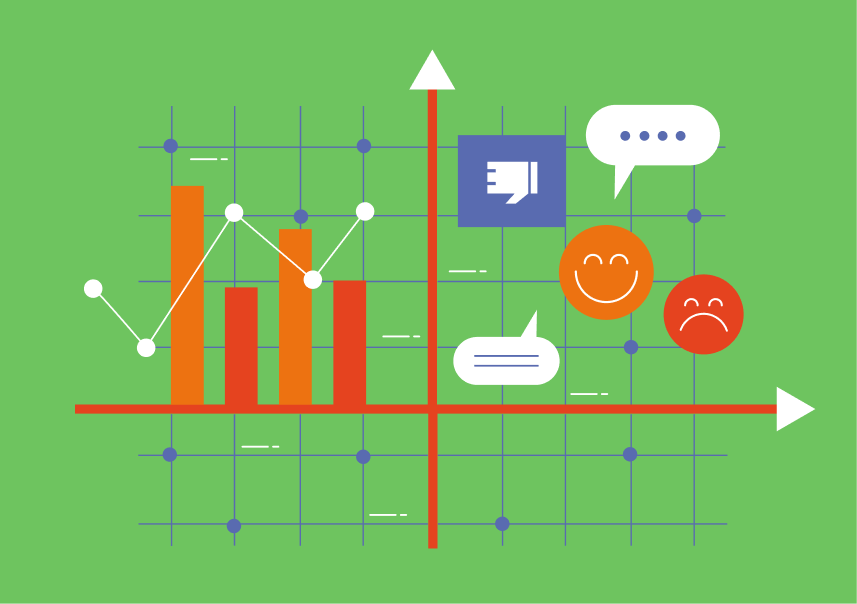
Choosing a suitable user research method can be difficult, even for experienced designers. To do that, consider that user research is a systematic investigation of the users to gather insights that inform the design process. It is a continuous part of the development life cycle and is crucial for creating user-centered products.
Therefore, the choice of the research method will be influenced by the stage of the development lifecycle your project is in and by the kind of information you want to learn. You can learn more about different types of research in this article.
This blog post will provide a step-by-step guide on choosing the user research method for your project that will provide you with the most valuable data. We’ll also break down some of the most common methods and explain when to use them.
Choosing the user research method is crucial to planning your user research study. The choice of your research method will result from your study’s research goals and questions. To learn more about planning a research study, check out this article.
Once you’ve defined your research goals, you can narrow your options and choose the proper user research method for your project.
There are a few factors to consider when deciding, such as the type of data you want to collect, the size of your budget, and the amount of time you have available.
In the following few sections, we’ll break down the general outline of choosing the right user research method for your project.

Before choosing a user research method, you must clearly define the problem you’re trying to solve and the goal of your research.
What are you trying to learn about your users? What are the specific questions you need to answer?
Once you understand the problem, you can brainstorm potential user research methods. Consider the following questions:
The answers to these questions will help you narrow your options and choose the correct user research method for your project.
Once you’ve chosen a user research method, you must develop a detailed study plan. This plan should include the following:
This article discusses creating your research plan’s “research methodology” element. It should also include two aspects:
Carefully planning your research study has many benefits, including aligning your team on the main objective, streamlining your research process, and saving you time and money.
Choosing the right user method will increase the likelihood of collecting valid and reliable data. The insights from your study will also allow you to identify potential risks and challenges and develop plans to mitigate them.
When choosing a user research method, it’s crucial to consider the type of data you need to collect. The data type will determine the most appropriate methods for your research objectives.
We discuss different types of user research methods in this article. Here’s a breakdown of the main types of research methods and the types of information they collect:
Qualitative data focuses on understanding user experiences, motivations, and opinions. It provides in-depth insights into user behavior and attitudes. Methods for collecting qualitative data include:
Quantitative data focuses on numerical measurements and statistics. It provides concrete evidence and trends that can be used to make data-driven decisions. Methods for collecting quantitative data include:
Attitudinal user research methods focus on understanding users’ attitudes, beliefs, and perceptions toward a product, service, or concept. These methods uncover users’ feelings, opinions, and motivations about the research subject. Examples of attitudinal user research methods include:
Behavioral user research methods focus on observing and analyzing users’ actions and interactions with a product, service, or environment. These methods aim to understand how users actually behave and make decisions in real-world settings. Examples of behavioral user research methods include:
Generative user research methods stimulate creativity and generate new ideas based on the insights from the research. These methods aim to uncover users’ needs, preferences, and aspirations. Examples of generative user research methods include:
Evaluative user research methods focus on assessing the effectiveness of a product, service, or design. These methods aim to measure user satisfaction, identify areas for improvement, and determine the overall usability of a product or service. Examples of evaluative user research methods include:
By identifying the data type you need, you can narrow down your options and choose the most suitable user research methods for your project.
In addition to defining the type of data you need, it’s essential to consider your research resources and limitations. This includes factors such as:
By understanding your resources and limitations, you can choose user research methods that are feasible and realistic for your project.
Once you’ve considered all the factors mentioned above, you can start evaluating specific user research methods and selecting the most appropriate ones for your project.
Here is an overview of types of the most popular user research methods:
Remember, there’s no one-size-fits-all approach, and the best method often involves combining techniques to gain comprehensive insights.
Now let’s explore a few real-life case studies of user research studies to gain a better perspective on choosing the right User Research Method.
The stakeholder or user interviews are research methods commonly used at the beginning of the product development lifecycle. Early in the development, they help to generate ideas of the product’s features or main functionalities.
However, interviews can sometimes be used to gain new perspectives on the existing products.
An example of this is a case study by Lena Emara. The goal of her research was to understand Amazon’s user views on sustainability. The author of this study required qualitative data and turned to user interviews to get it.
This research produced the following insights:
With this knowledge, designers created banners informing users about sustainable practices that apply to the products users buy.
Read the full case study here.
The idea behind this case study was to encourage people to walk or take a bike to work instead of driving, which, as a result, would reduce gas emissions. The author of this study, Eden Shopen, conducted a survey to learn more about users’ daily routines.
The research goal was to learn more about the target audience, which included people who commute every day to work by car. Synthesis of data from the survey provided the following insight: The distance from work is the main thing that stops people from commuting by walking, but fitness and low motivation also play a role in that.
Based on those insights, the designers devised a solution for that. They created a concept of a new feature to the Nike app that gamifies daily commute and encourages users to try alternatives to commuting by car.
For more details, read The goal: Reduce gas emissions, The method: An Apple watch game.
Sometimes, research studies a single element or feature in the context of a digital product. The case study of the Kapital Bank describes research conducted on the advertisement banner to be added to the Kapital Bank app.
Designers crafted different versions of the banner, and the primary goal of their research was to find out which banner attracts more attention and is more likely to be clicked on.
For this goal, the most efficient research method was A/B testing, in which the researcher compared two versions of the banner and tested which one performed better.
Through this method, they learned that a banner with a prominent CTA button better fit their app. It had a higher conversion rate, and the A/B test provided them with quantitative data to support that design decision.
Here, you will find a full description of this case study.
Rangga Ray Irawan conducted a usability test on the Quora, Q&A Social Media Network.
His research goals were to identify and discover users’ frustrations on the Quora website, observe how the users interact with Quora, and discover future opportunities for improving the design.
Therefore, he was interested in gaining qualitative data to investigate users’ behaviors rather than their attitudes, and the purpose of this study was to evaluate the existing design.
As a result, his chosen method for this study was a usability study, specifically a remote usability study (as the study was conducted during the Covid-19 pandemic).
The study discovered the following paint points:
The study resulted in recommendations for the changes in the design. The author recommends buttons, icons, and fonts should be redesigned. The author suggests that these elements should be enlarged, and their colors should be brighter to make them easier to identify by the user. The researcher also recommends changes in the website’s choice of words to ensure users understand their options.
Read the full case study here.
In addition to the steps outlined above, here are some additional considerations to keep in mind when choosing user research methods:
2. Pilot testing: Before fully deploying the study, consider piloting your research methods to identify potential issues or challenges.
3. Triangulation: Combining multiple user research methods can provide a more comprehensive and reliable understanding of your users.
4. Iteration: User research is an iterative process. Be prepared to adjust your research methods based on the insights you gather.
5. Communication: Effectively communicate your research findings and recommendations to stakeholders to ensure they are actionable and drive product improvements.
User research is essential for creating products and services that people love to use. By carefully choosing suitable user research methods, you can gain valuable insights into your users’ needs, behaviors, and motivations. This information can then be used to make informed design decisions that improve the user experience and ultimately drive business success.
Remember, user research is not a one-time event but an ongoing process that should be integrated into your product development lifecycle. By continuously gathering and analyzing user insights, you can ensure your products and services remain relevant and engaging for your target audience.